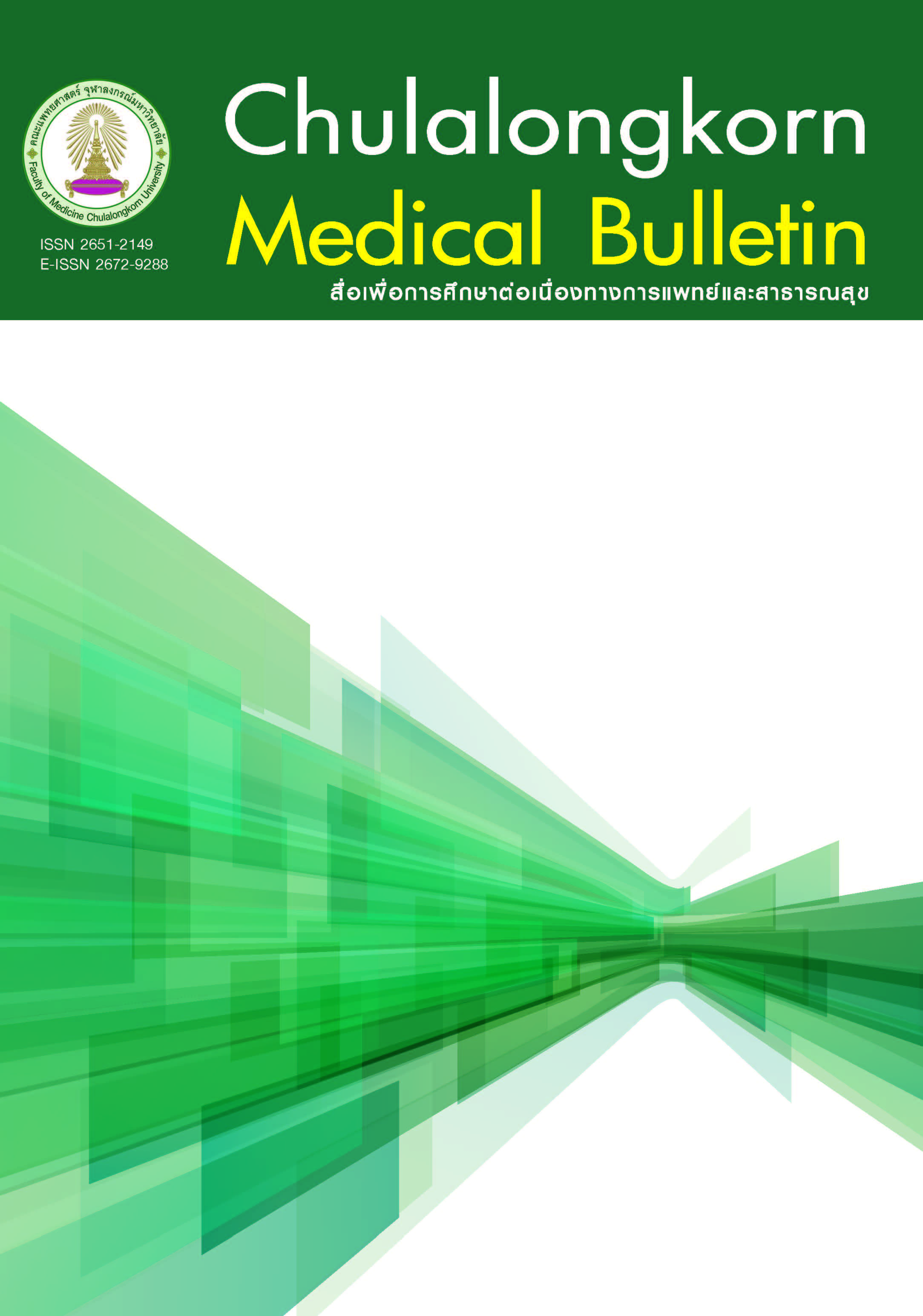Therapeutic play for children coping with stress underwent venipuncture at King Chulalongkorn Memorial Hospital
Keywords:
Therapeutic play, children, venipuncture, hospitalizationAbstract
Background: Venipuncture is one of the most common and stressful procedures for the preschool children that find it difficult to cope with. Therapeutic play is one of the preparations to relieve their stress. However, there has been no study that assesses the internal experiences of preschool children with projective test in Thailand.
Objectives: To study the effect of therapeutic play for stress reduction from venipuncture and to demonstrate the stress of the hospitalized children.
Methods: Eight hospitalized children aged 5 - 7 years old were recruited. We obtained the data of Child drawing: Hospital and Children’s Fear Scale before and after venipuncture combined with therapeutic play intervention. The data were analyzed using qualitative approach with Colaizzi’s method.
Results: Stress of the 5 to 7 years old hospitalized children consisted of fear of medical instruments, their own illness and isolation from their guardians. By using therapeutic play, 4 of 8 children had lower the scores from Child drawing: Hospital correlated with Children’s Fear Scale. However, the assumption cannot be concluded due to limited number of samples.
Conclusion: The results of this study illustrate that therapeutic play can help hospitalized children coping with venipuncture through increasing sense of security and decreasing anxiety. It will be beneficial to establish therapeutic play as a routine practice for hospitalized children; however, retraumatization needs precaution.






